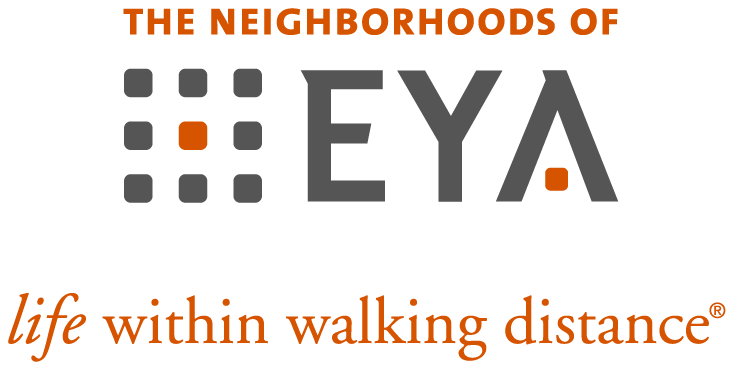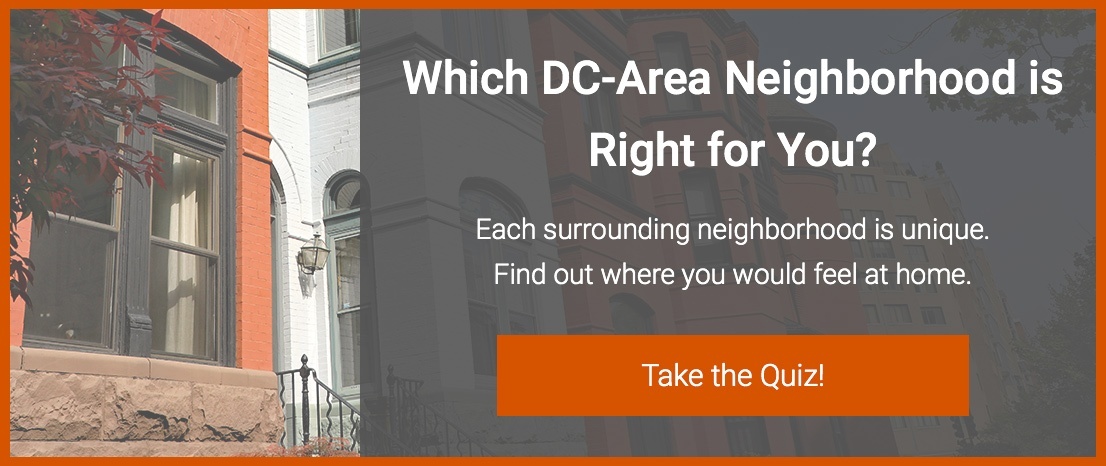Top 3 things to consider when choosing between a condo or townhome
Grosvenor Heights | Westside at Shady Grove Metro | Montgomery Row | Lock and Go Lifestyle | DC townhomes | Homewoner Maintenance | Chevy Chase Lake | The Brownstones at Chevy Chase Lake | New Townhomes | Robinson Landing | D.C. Area | Building Community
By: EYA Homes on December 19th, 2018
Townhomes and condominiums offer today’s homebuyer a variety of choices for living in walkable downtown and suburban neighborhoods and are ideal for those seeking a low maintenance, lock and leave lifestyle.
These factors are particularly appealing to two groups: Millennials, who value an urban living environment that provides easy access to places they frequent; and empty nesters who also desire amenities “in the neighborhood” and want the freedom to travel and not worry about maintenance.
Leanne Lachman, author of “Gen Y and Housing; What They Want and Where They Want It” from the Urban Land Institute, says Millennials “remain steadfast in their preference for neighborhoods with urban characteristics, such as a high degree of walkability, transportation alternatives, and easy access to shopping, entertainment and places to hang out.”
In many respects, empty nesters are similar, according to Maya Sachdeva, in an article written earlier this year for MetroStudy: “Empty Nesters: Millennials at Heart.”
“Empty nesters are not ready to show their age,” she said. “They enjoy locations that are more infill and closer to the action. Town Center developments are highly desirable for these buyers to stay connected to entertainment, work and retail.”
If you’re in either group or among the many other homebuyers considering townhome or condominium living in the metro area, there are many factors to evaluate.
Here are some key points to consider as you make the choice.
1. Understanding The Difference
Let’s start with having a basic understanding of the two choices.
Condominiums are typically – but not always – one level and found in multi-story buildings. Units tend to be smaller in square footage than most townhomes.
Unlike apartments owned by landlords, individuals purchase condominium interior units, and they are responsible for repairs within their walls.
A condominium association owns and maintains the land, building and common areas. It’s joint ownership, and all residents share in the upkeep, common area utilities and insurance.
In townhome communities, residences are designed in rows and homeowners share at least one wall with a neighbor. With land at a premium in the D.C. metro area, new luxury townhome communities are mostly built on infill sites.
In townhome communities, the buyer typically owns and is responsible for the individual home’s interior and exterior as well as insurance for the structure and property.
Owners pay a Homeowners Association (HOA) fee that covers common area maintenance.
2. Costs & Association Fees
Both condominiums and townhomes offer residents an element of freedom that doesn’t exist with single detached homes. There’s no need to mow and fertilize the lawn, prune trees, rake leaves and shovel snow from the sidewalks. Typically your responsibilities end once you leave the front door.
In a townhome community, the HOA secures an outside contractor to handle these types of responsibilities, which are paid for by annual or monthly association fees.
The HOA has a board of residents who will approve annual fee increases as the costs for contractor services rise, but the jump is often nominal and predictable based on standard cost of living statistics.
Your HOA fee, equal among owners, will also cover any community amenities that could include onsite parks, swimming pools and other features.
For condominium residents, the costs of building services, maintenance and repairs is shared among all owners in the building. They pay a monthly condo fee based on the size of their unit.
Part of the fee is for keeping systems operational like HVAC, electric, plumbing and elevators. It also entails repairs and maintenance for common areas such as hallways, lobbies, outdoor terraces, amenity rooms and the garage as well as the building’s exterior including roofs, facades, windows and doors, sidewalks, driveways and green spaces.
Your condo fee also covers costs for building amenities including swimming pool, fitness center, security, concierge and parking spaces. The more services included, the higher the fee.
For buildings that have a doorman or concierge – common in luxury high-rise condominiums with many residents – owners may be expected to provide a personal gratuity that supplements their salaries and is often given at the end of each year.
A property management company is usually engaged or salaried personnel are hired for daily building maintenance, trash removal, security and front desk services that may include visitor sign-in, mail and package delivery
From time to time, professional counsel may also need to be hired for taxes, auditing and legal matters including disputes with contractors and condo owners.
To cover this broader set of building responsibilities and amenities, significantly higher monthly fees are charged to condo owners vs. townhome residents.
In addition to the condominium association’s monthly maintenance and services budget, money is put into a reserve fund to cover larger repair issues when they occur.
The condominium’s board of directors governs repair and renovation decisions. Sometimes there are special assessments voted on by the association members to undertake major repairs.
Also, when reserve funds fall too low or major repairs go over budget, owners are issued assessments to pay for the work and set aside money for future needs.
From time to time, the association membership may vote on major aesthetic refurbishments such as a lobby renovation, new carpeting or re-painting throughout the building’s common areas. All owners share in the cost.
3. Control and Oversight
Whether you are a condominium or townhome owner, it’s democratic decision-making and you abide by the majority opinion of your governing association.
At times it may seem restrictive, but the associations help to promote “community,” ensures that your neighbors adhere to rules and keeps a high standard of appearance when it comes to residences. This cannot be guaranteed in single-family home ownership that does not include an HOA.
All buyers should have a full understanding of condominium association and community HOA bylaws at the time of purchase. But sometimes rules change.
For condominium owners, decisions made by their association have greater impact in terms of cost and lifestyle. Common subjects that come into question are noise restrictions, visitor policies, rental regulations and pet stipulations.
Townhome HOAs will set and enforce rules that are often associated with home exteriors. They range from policies about major additions like porches and decks to lesser improvements, including satellite dishes, planters and flower baskets, holiday decorations and flags.
Rules may also govern where you can walk your pets, the types of vehicles you can ride in the neighborhood (skateboards, motorized bikes, etc.) and where children can play.
But in general, townhome regulations are less comprehensive and only pertain to outside space vs. shared interior areas at condominiums.
Ultimately the choice between a townhome or condo is a personal decision that boils down to lifestyle preference, perceived value for your money based on the services and amenities provided, and the amount of personal control you desire for your living environment.
Talking with your realtor, accountant, attorney, financial advisor and other owners living in the building or community will help you make the right choice for your next move.



